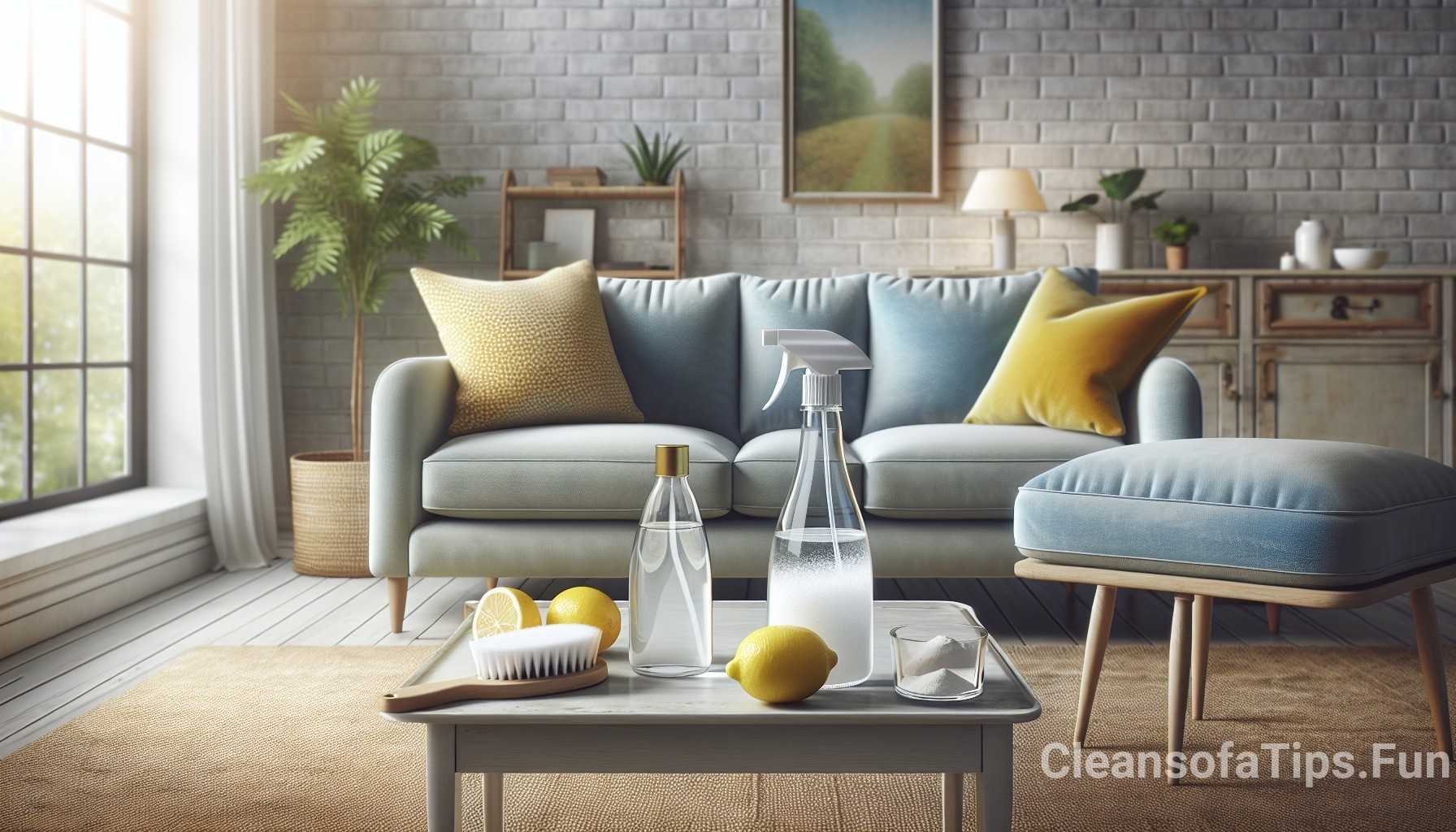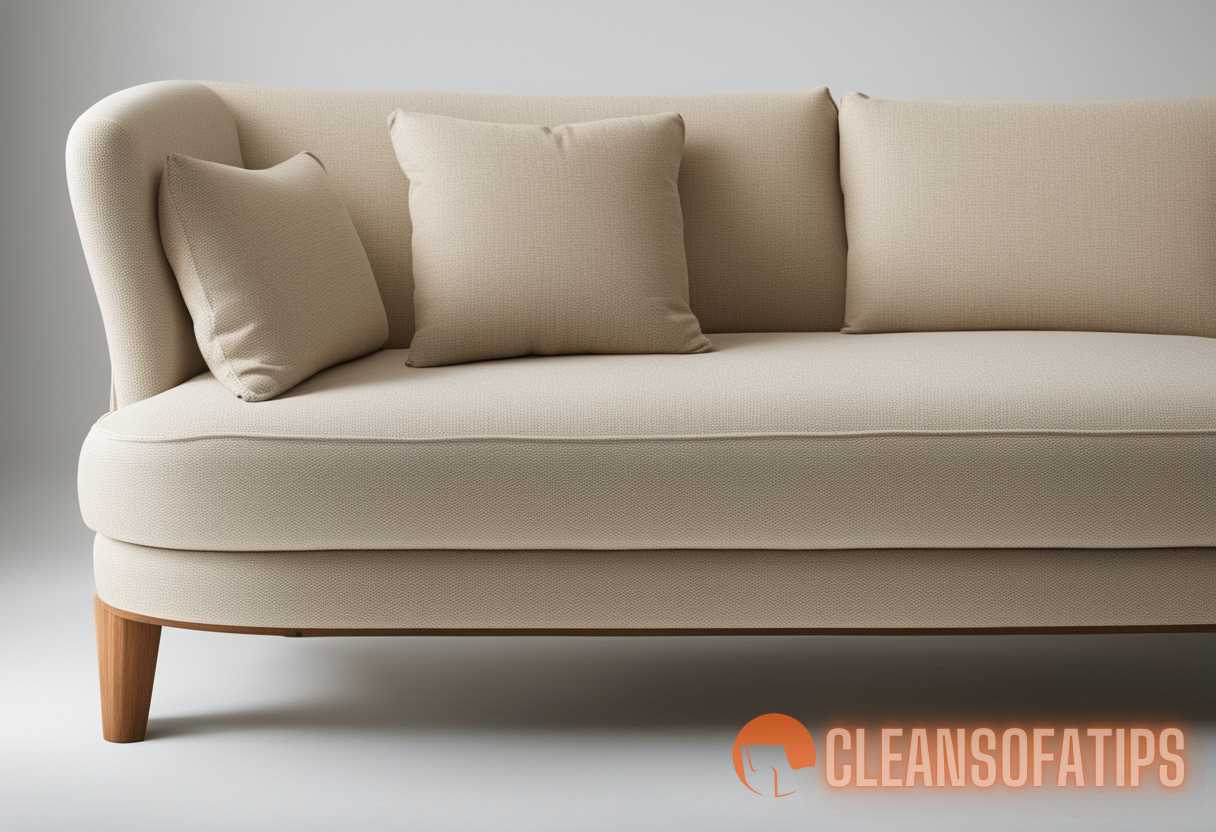Natural Upholstery Cleaners You Can Make at Home
Introduction
When it comes to cleaning upholstery, many people turn to commercial cleaning products that are often filled with harsh chemicals. These chemicals can not only be harmful to the environment, but they can also leave behind residue that can be irritating to you and your family. Luckily, there are natural upholstery cleaners you can make at home that are just as effective, if not more so, and won’t leave behind any harmful residue. In this article, we will explore different home remedies for cleaning upholstery and provide detailed instructions on how to make them.
The Benefits of Natural Upholstery Cleaners
Using natural upholstery cleaners has several benefits, both for you and the environment. Here are some of the main advantages:
- No harsh chemicals: One of the most significant benefits of natural upholstery cleaners is that they don’t contain harsh chemicals that can be harmful to you, your family, and the environment. Instead, they utilize natural ingredients that are safe and non-toxic.
- Eco-friendly: Commercial cleaning products often contain chemicals that can pollute the environment. By using natural upholstery cleaners, you are reducing your carbon footprint and contributing to a cleaner and healthier planet.
- Cost-effective: Natural upholstery cleaners can be made with simple ingredients that you likely already have in your pantry. This makes them much more budget-friendly compared to purchasing expensive commercial cleaning products.
- Effective and versatile: Contrary to popular belief, natural upholstery cleaners can be just as effective, if not more so, than their commercial counterparts. They have been used for generations and have proven track records of successful cleaning.
Recipes for Natural Upholstery Cleaners
Now that you understand the benefits of using natural upholstery cleaners, let’s explore some of the most effective recipes you can make at home. Each recipe is tailored to different types of upholstery materials, so make sure to choose the one that fits your needs.
1. Fabric Upholstery Cleaner
If you have fabric upholstery, this recipe is perfect for you. It’s straightforward to make and requires only a few ingredients.
Ingredients:
- 1 cup warm water
- 1/4 cup vinegar
- 1/4 cup rubbing alcohol
- 1 tablespoon dish soap
- Essential oil (optional for fragrance)
Instructions:
- Mix all the ingredients together in a spray bottle.
- Shake the bottle well to ensure everything is thoroughly combined.
- Spray the mixture onto the stained area of your fabric upholstery.
- Gently scrub the stain with a soft-bristled brush or cloth.
- Blot the area with a clean, dry cloth to remove excess moisture.
- Allow the upholstery to air dry completely.
2. Leather Upholstery Cleaner
Leather upholstery requires a different type of cleaner because it is more delicate than fabric. This recipe is specifically designed for cleaning and conditioning leather upholstery.
Ingredients:
- 1/2 cup olive oil
- 1/4 cup vinegar
- 10 drops essential oil (optional for fragrance)

Instructions:
- Mix the olive oil and vinegar together in a spray bottle.
- Add the essential oil if desired and shake the bottle to combine.
- Spray the mixture onto a clean cloth.
- Gently wipe down the leather upholstery, making sure to cover the entire surface.
- Allow the upholstery to air dry completely.
3. Microfiber Upholstery Cleaner
Microfiber upholstery is incredibly popular due to its durability and stain resistance. However, it still requires regular cleaning to keep it looking its best. This recipe is specifically formulated for microfiber upholstery.
Ingredients:
- 1/2 cup rubbing alcohol
- 1/2 cup warm water
- 1 tablespoon dish soap
- Essential oil (optional for fragrance)
Instructions:
- Combine the rubbing alcohol, warm water, dish soap, and essential oil (if desired) in a spray bottle.
- Shake the bottle to ensure all the ingredients are mixed well.
- Spray the mixture onto the stained area of your microfiber upholstery.
- Gently scrub the stain with a soft-bristled brush or cloth.
- Blot the area with a clean, dry cloth to remove excess moisture.
- Allow the upholstery to air dry completely.
Additional Tips for Cleaning Upholstery
In addition to using homemade upholstery cleaners, there are a few additional tips you should keep in mind when cleaning your upholstery:
- Test in an inconspicuous area: Before applying any cleaner to your upholstery, it’s vital to test it in an inconspicuous area to ensure it does not damage or discolor the fabric.
- Blot, don’t rub: When cleaning upholstery, it’s important to avoid rubbing the stain. Instead, gently blot the area with a clean cloth to avoid spreading the stain or damaging the fabric.
- Work from the outside in: If you have a larger stain that needs to be cleaned, start by working from the outside edges towards the center. This helps prevent the stain from spreading.
- Allow plenty of drying time: After cleaning your upholstery, it’s essential to allow it to dry completely before using it again. This helps prevent any lingering moisture from causing mildew or other damage.
- Regular maintenance: To keep your upholstery looking its best, it’s essential to regularly vacuum it and spot clean any spills or stains as soon as they occur.
Conclusion
Cleaning upholstery doesn’t have to involve harsh chemicals and expensive commercial products. By using natural upholstery cleaners that you can make at home, you can achieve the same level of cleanliness without the harmful effects. Whether you have fabric, leather, or microfiber upholstery, there is a recipe that is perfect for your needs. Remember to always test any cleaner in an inconspicuous area and take the necessary precautions when cleaning your upholstery. With these natural upholstery cleaners and some basic maintenance, your upholstery will stay clean and fresh for years to come.
External Link
For more information on the history of upholstery, you can visit the Upholstery Wikipedia page.
Internal Links
To learn about other home remedies for household cleaning, check out our article on DIY Cleaning Solutions.
If you’re interested in eco-friendly products, our Guide to Sustainable Living has some great tips and suggestions.



